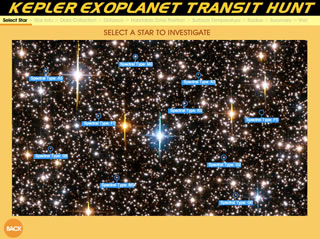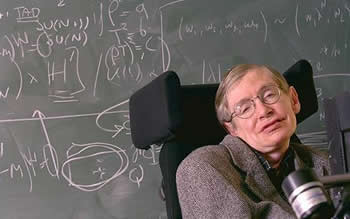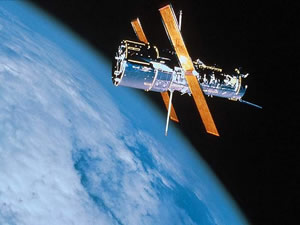The Parallel Universe of the People of God
For Sunday February 20, 2011
Lectionary Readings (Revised Common Lectionary, Year A)
Leviticus 19:1–2, 9–18
Psalm 119:33–40
1 Corinthians 3:10–11, 16–23
Matthew 5:38–48
About ten minutes down the freeway from my house, physicists at the NASA Ames Research Center are monitoring 156,000 stars in a tiny sliver of sky called the "Goldilocks Zone" that's not too hot or not too cold for there to be liquid water. Their goal is to find life on other earth-like "exo-planets." A few weeks ago they announced that they had identified 1,235 possible planets, fifty-four of which are about the size of the earth and in the habitable Goldilocks zone. "It boggles the mind," said Kepler's leader William Borucki.
 |
Kepler exo-planet hunt. |
Searching for life-like planets is sexy science, but consider another one of the hottest topics in cosmology — parallel universes. Books like The Grand Design (2010) by Stephen Hawking and The Hidden Reality: Parallel Universes and the Deep Laws of the Cosmos (2011) by Brian Greene explore the notion that reality is composed not merely of our single "universe," but of many "multiverses," each with its own set of natural laws. The very thought "would blow Newton's mind," says the theoretical physicist Brian Greene.1
I often wonder if in addition to the joy of science whether there's a wistfulness in the search for other worlds. Maybe there's a similar-but-different form of life on an exo-planet that's doing better than we are on our battered earth? Perhaps there's a whole different realm of being where time is eternal, space is infinite, the laws of physics are unique, and our longing for magic and mystery finds fulfillment? In fact, the Christian good news affirms something quite like this.
A parallel world or alternate reality is not a bad way to describe the community of God's people. Jesus compares it to living under a different king (Mark 1:15) or to drinking wine that's so full of fermentation that it explodes its wineskin (Matthew 9:14ff). Paul describes an alternate citizenship that disregards the ways of the world (Philippians 3:20). Peter imagines God's people as a unique nation (1 Peter 2:9), whereas a few centuries later Saint Augustine called it the "city of God."
Wine, citizenship, a nation, or a city — these metaphors suggest that God's community offers a radical alternative to business as usual on planet earth. Life in God's parallel universe is "not like the other nations" (Leviticus 19). It's not like the life a pagan or a tax collector, says Jesus (Matthew 5). It's something beyond and better than living in infantile ways or like "mere men," says Paul (1 Cor. 3).
Nor is this just a faint hope for the far future. Rather, it's a present day reality expressed in the Lord's Prayer that's prayed by Christians all over the world every day: "Thy kingdom come, thy will be done, on earth as it is in heaven."
 |
Stephen Hawking. |
Citizens in this new "nation" have no interest in conquering other lands or peoples. Its primary measure of success is not its gross national product. Its people are not afraid of aliens and immigrants but instead welcome them. In short, the alternative community of God reflects the character of God; in the words of Peter it "shows forth the praises of Him who called you" (1 Peter 2:9).
In order to reflect God's character, the community has received God's commandments. The word "commandments" is an unfortunate translation that evokes all sorts of negative connotations, some for good reasons. We shouldn't think of legalistic rule-keeping, which only leads to self-righteousness or despair. I like to think of God's commandments not as restrictive prohibitions but as life-giving promises. Even an ancient text like Leviticus makes this clear.
Leviticus 19, which includes the "Ten Commandments," is part of a comprehensive and complex holiness code that regulated personal and community life for the Hebrew people 3,500 years ago. By one count there are 613 mizvot or "commandments" in the five books of Moses (the Torah). These purity laws in Leviticus chapters 11–26 regulated virtually every aspect of being human — birth, death, sex, gender, health, economics, jurisprudence, social relations, hygiene, marriage, behavior, and certainly ethnicity (Gentiles were automatically considered impure). They specify in minute detail what foods are "clean" to eat, rituals to perform after childbirth or a menstrual cycle, prohibitions against contact with a human corpse or dead animal, instructions about nocturnal emissions, agricultural guidelines for planting seeds and mating animals, and decrees about sexual relationships, sabbath observance, and even tattoos.
Why so many rules? What's their function? Some of these purity laws encoded common sense or moral ideals that we still follow today, like prohibitions against incest. Others regulated hygiene and sanitation. Still others symbolized Israel's unique identity that differentiated its people from pagan nations. Ultimately, though, the purity laws and holiness code ritualized an exhortation from Yahweh that is as relevant today as it was 3,500 years ago: "Be holy because I, the Lord your God, am holy" (Leviticus 19:2, NIV).
God's community thus reflects his character through the help of his commandments.
Some people object to this as a sort of prison. To me it sounds like paradise. Imagine a "parallel world" where people didn't steal. Picture a community that didn't hoard its agricultural abundance but shared it liberally with people in other communities. Consider what work would feel like if employers never exploited their employees, what courts would look like if witnesses never gave false testimony and judges didn't accept bribes. Dream about a world where women and girls were not trafficked for profit, and where the aged, the alien and the infirm were not marginalized but honored. That's what community life would be like in Leviticus 19.
 |
Hubble telescope. |
Jesus takes this ancient text as a manifesto of his mission. He didn't come to abolish this ancient law, he says, but to fulfill, broaden and deepen it. Jesus is not the "end" of the law but its goal or purpose, for he himself is the "exact representation of God's nature" (Hebrews 1:3) which we his followers hope to reflect.
Jesus provokes us to move beyond outward ritual to inward transformation, to live with interior compassion for people rather than with exterior compliance to a law. When that happens, he says, the people of God reflect his character. They incarnate a parallel world here and now that's nothing short of "perfect" (Matthew 5:48), perfect because it is not only "holy" (Leviticus 19:2) but because it is also "merciful" (Luke 6:36).
[1] See Dennis Overbye, "Gazing Afar for Other Earths, and Other Beings" (NYT, January 30, 2011) and "Kepler Planet Hunter Finds 1,200 Possibilities" (NYT, February 2, 2011); Steven Weinberg, "The Universes We Still Don't Know" (NYRB, February 10, 2011), a review of Stephen Hawking and Leonard Mlodinow, The Grand Design (2010); and Janet Maslin, "Multiple Universe Theory Made, Well, Easier" (NYT, January 26, 2011), a review of the book by Brian Greene, The Hidden Reality: Parallel Universes and the Deep Laws of the Cosmos (2011).
For further reflection
The Peace Prayer of Saint Francis of Assisi (1182–1226)
Lord, make me an instrument of your peace.
Where there is hatred, let me sow love;
Where there is error, truth;
Where there is injury, pardon;
Where there is doubt, faith;
Where there is despair, hope;
Where there is darkness, light;
And where there is sadness, joy.
O Divine Master, grant that I may not so much seek
To be consoled as to console;
To be understood as to understand;
To be loved as to love.
For it is in giving that we receive;
It is in pardoning that we are pardoned;
It is in self-forgetting that we find;
And it is in dying to ourselves that we are born to eternal life.
Amen.
We don't know the author of this classic prayer, and it was not until the 1920s that it was even ascribed to Saint Francis. By one account the prayer was found in 1915 in Normandy, written on the back of a card of Saint Francis. But it certainly emulates his longing to be an instrument of peace, reconciliation and redemption in our fallen world.
Image credits: (1) NASA; (2) The Telegraph; and (3) It's Space Art.





